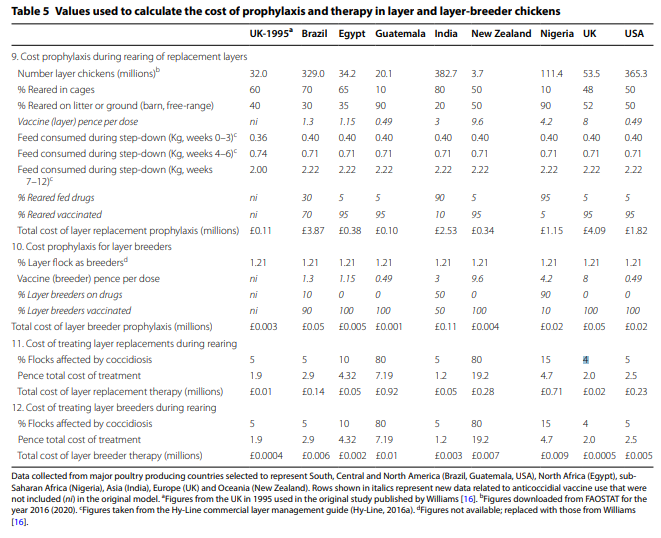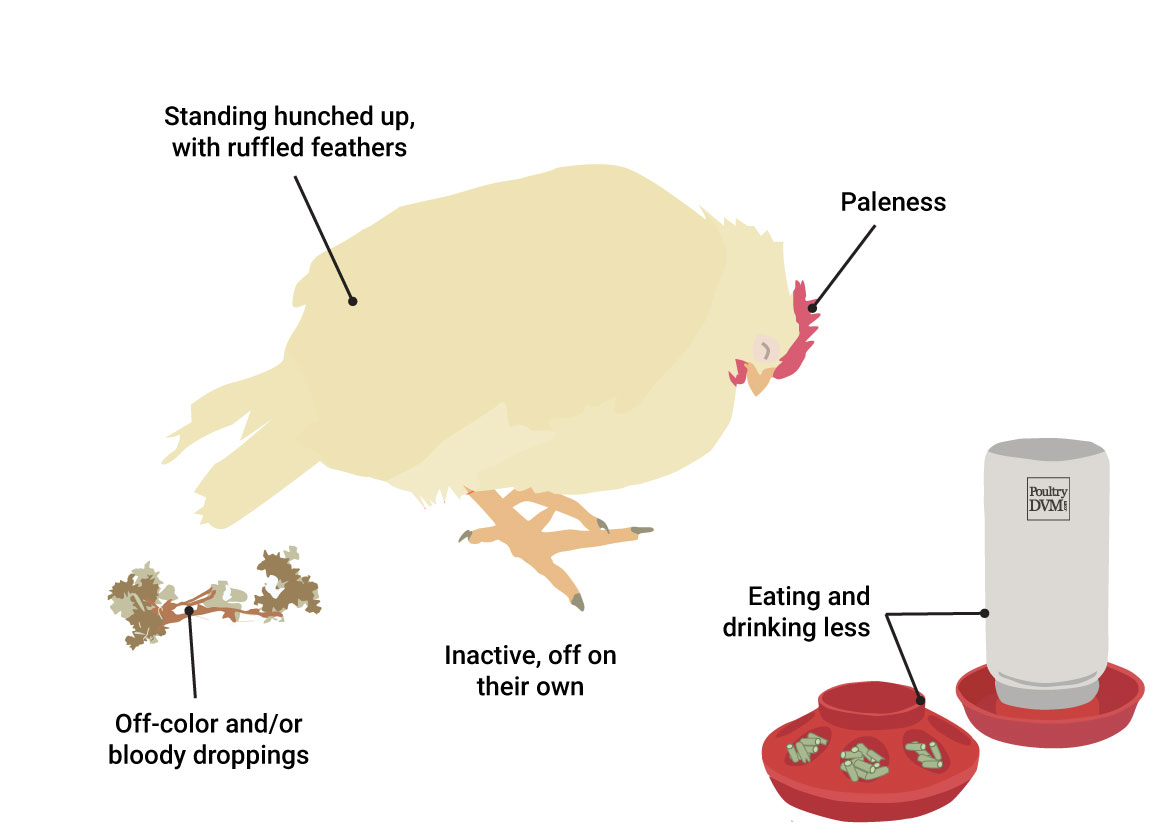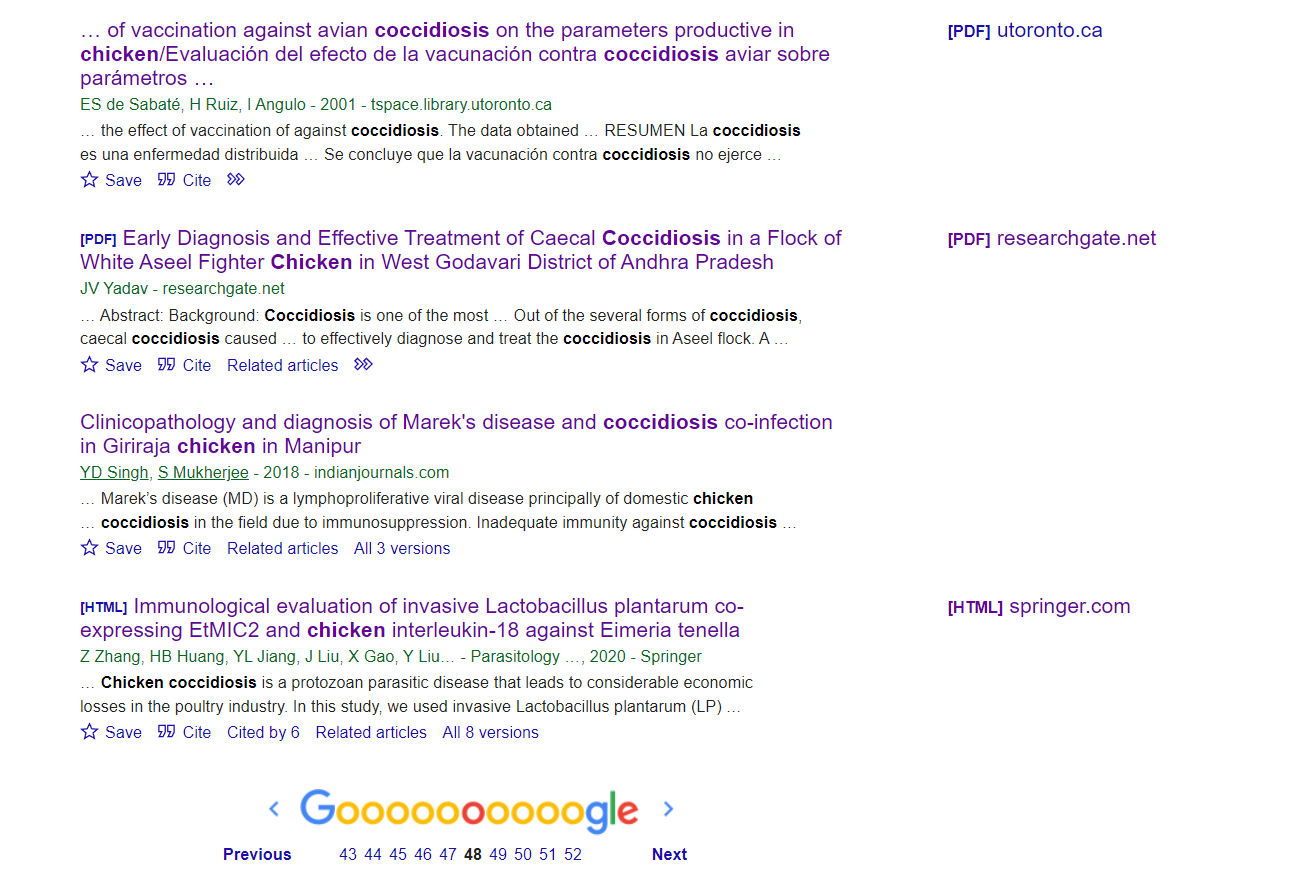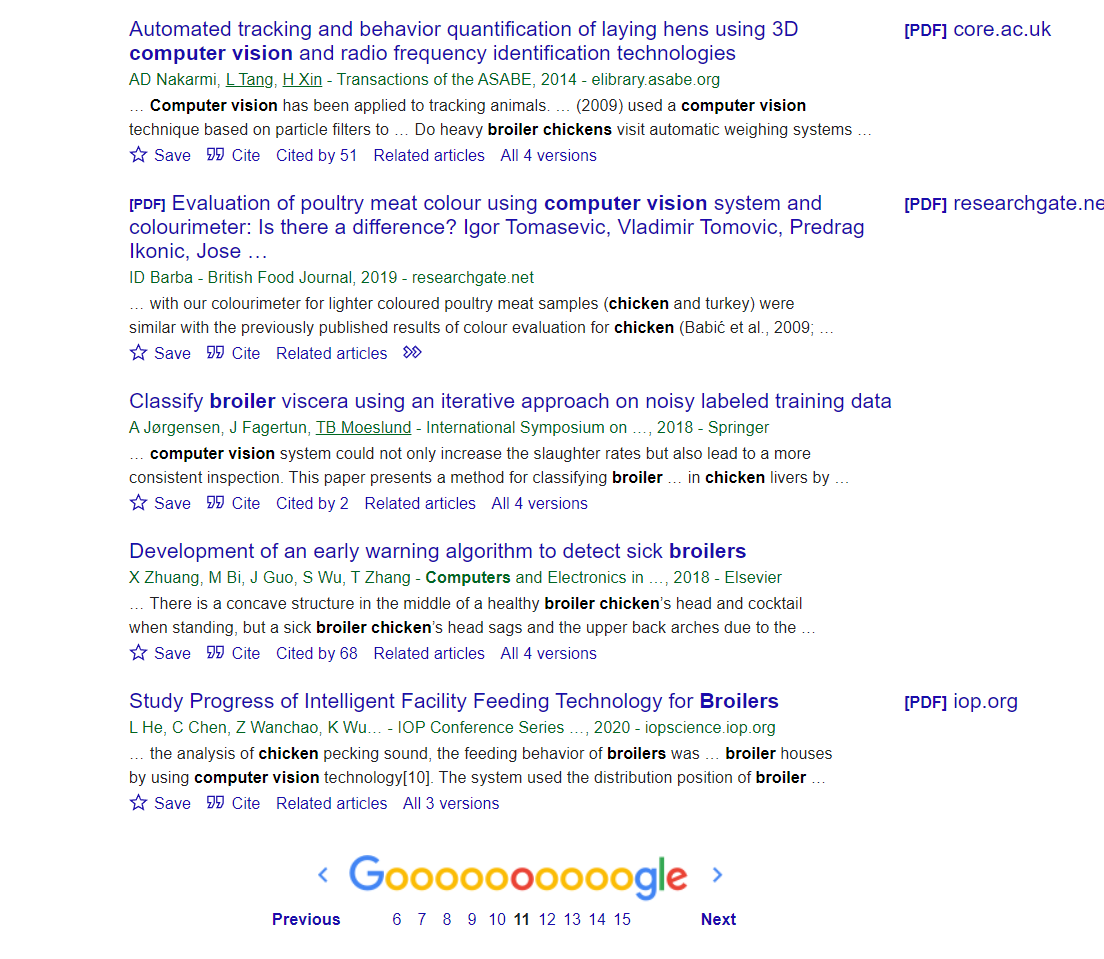Outlining the problem
More than 68 billion chickens were farmed in 2018, representing a third of all meat produced globally in addition to 1.38 trillion eggs for human consumption.[1] It's probably not a controversial take to say that Chickens share of the global non-human animal suffering is the biggest of any land animal. Any welfare improvements to farm chickens would probably effect massive numbers of individuals, even if just on a country by country basis.
There is a common disease in chickens called Coccidiosis. The cost of Coccidiosis in chicken farming in the UK using 2016 prices is £0.16/ chicken produced.[2] There is a financial interest to try to get rid of the disease from farm's supply because it costs them money to have to cull chickens prior to slaughter age because of waste. Coccidiosis is also bad for broiler/egg laying chicken welfare because they suffer and die from a parasitic infection before "normal" slaughter age.
“Our survey suggested that approximately 2% of UK broilers would be expected to die or (more commonly) be culled in a house affected by coccidiosis. Thus, if 31.5 million broilers were in houses affected by coccidiosis, mortality would have been 630,000. Note, the figure does not include losses due to subsequent mortality caused by other opportunistic pathogens.”[2]
In 2016 in the UK at least 95% of egg laying chickens received live anticoccidial vaccination. The average cost of an anticoccidial vaccine was 8p per dose in the UK in 2016. If 95% of laying hens received vaccines, the total cost would have been £4.06 million. [2]

As you can see from the table above, despite an effective and cheap vaccine the disease is still a source of pain in the industry. And in countries which don’t have a strong take up of the vaccine, the percentage of affected flocks is even higher.
How AI could potentially help
Luckily, the disease Coccidiosis has quite visible symptoms, as seen from the image below: [3]
[3]
[Redacted, see comments].
Uncertainties
Would spotting Coccidiosis early significantly reduce the risk/damage of an outbreak?
It’s unclear, but some websites seem to indicate that if it's spotted early then it can be treated easier. However farms are more likely to cull than treat according to the study[2]. But this could just be because by the time the farms notice chickens are sick those chickens are too far gone. Further investigation is probably needed here in reaching out and talking to farmers.
Blockers to potential work / the outcome being useful
- [Redacted, see comments]
- It's possible the footage from said cameras would be too poor quality for the AI to gain any information from it.
- Chicken farms might be against having cameras in their farm
Next steps
I have some experience in writing [redacted] and would be able to take a crack at creating some type of algorithm for it on my own. However, after googling I realise I have no method of collecting the training data required to test this out. So for the time being the idea is stuck.
Which sucks because I think this idea strikes a rare alignment of being both good for animal welfare and farmers profits (and food security too actually).
If anyone thinks this is a good idea and would like to help in some way or have connections to chicken farms who could potentially supply training data for the algorithm that would be amazing. If anyone wants to grab this idea and investigate it on their own that would be great too.
Feedback about whether this is in fact a good idea is very welcome.



Hi Max. I appreciate you writing this post. Unfortunately, I have bad things to report.
First, I believe a high % of your description of the problem is roughly correct, and also that your AI solution has a decent chance of greatly reducing this problem. Re: your uncertainty. I think early detection is of big value to the factory farmers.
Second, rather unintuitively, these are exactly why it might be a very harmful idea. I am very uncertain about my arguments but let me present them for discussion. My main reason is that if the solution works, it will significantly reduce the cost of raising chickens, and that would reduce the relative competitiveness of alternative proteins such as plant-based products and cultivated meat. A secondary reason is that in most cases, coccidiosis correlates with high stocking density. So it is likely that if factory farms significantly reduce the problem of coccidiosis, they will increase stocking density, and that will take away some of the suffering reduced, or even more than that of the reduced.
I think the main reason might be many orders of magnitude more important than the secondary reason so let me explain a bit more. If we decrease the probability that alternative protein will replace chicken factory farming even just by 0.1%, the expected value of harm would be catastrophic because there could be many more years of chicken factory farming if we fail to replace it. For this argument to work I don't even need timescales that longtermists typically talk about, just take 1,000 more years of chicken factory farming, multiply it by the probability change that is due to the intervention you proposed, we could get a very negative evaluation (and if it is possible that factory farming might exist way longer than 1,000 years, which I argued is possible here, it could be even worse).
Also, at this point, it's important to point out that your proposed intervention only reduces the suffering of a small % of factory-farmed chickens. According to the statistics you provided, ~5% of flocks are affected, and 2% of chickens in affected flocks (that are pre-treated with medications or vaccines) will die. So only 0.1% of farmed chickens die from it. That is still a huge number. But is it really larger than the long-term impacts? I think it's unlikely.
Therefore, even if I am wrong about the secondary reason (increased stocking density) and there will be significant short-term benefits, they might be far outweighed by the long-term harms.
Third, I think it is likely (>90% if I have to put a number) that the industries (either chicken factory farming or AI people) will realize this opportunity and develop it anyway. So it seems to me, even ignoring my concerns above, the most likely counterfactual impact of your proposed intervention, if it succeeds, is making this happen a few years (unlikely to take decades, if it will happen at all) earlier.
Fourth, I highly recommend you take down at least the part of the post that describes the technical details of the proposed intervention due to the worry of info hazards. If we found out later that I am wrong about the alt-protein argument or the info-hazard, you can still put it back on here, or I can actually help to pitch this idea to donors.
Your idea looks too scarily likely to work to me. I mean, as I said in the third point, the factory farming or AI people will likely discover this by themselves. But what if they won't unless they see your idea? And also, just speeding it up also relates to my second point about long-term impacts - I think speeding this up also gives alt-protein a harder time.
I really appreciate your effort trying to think of ways to use your deep learning skills to help animals, I have some other ideas. Let me know if you prefer me to say it here or in private messages.
P.S./appendix: You mentioned "rare alignment of being both good for animal welfare and farmers profits". My take is that, due to the arguments I presented, what we want exactly is the decoupling of these two, not alignment. I mean, I am fine with aligning factory farmers' perceived profit with animal welfare, or aligning their short-term profit with animal welfare. But I am worried about, probably against, the idea of trying to align factory farmers' actual long-term profit with animal welfare. Because, I believe, their long-term profit is bad for animal welfare.
P.P.S. It is possible that the proposed intervention could still be positive from the long/mid-term perspective. For example, if the probability that chicken factory farming will be never replaced without the proposed intervention is close to 100%, let's say 99.9%, then the intervention would be positive even if it moves the 99.9% to 100%, because in a world that factory farming will 99.9% likely never be replaced, most of the work done by the intervention will be benefiting the chickens that will almost necessarily exist, not the harm it causes to the chickens it causes to exist who will otherwise not exist. The thing is that I just can't believe the probability of that is nearly as high as 99.9%.
Sorry for being late on the ideas! I posted one on another reply to Charles, here's another one:
It is possible to get CCTV footages and then label what behavior of factory farm slaughter house workers count as cruelty/improper/not standard abiding. I think this way we can train an algorithm to constantly monitor whether works are at least treating animals with minimal decency.
See also this post.